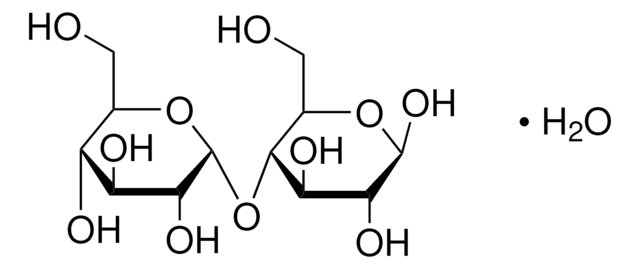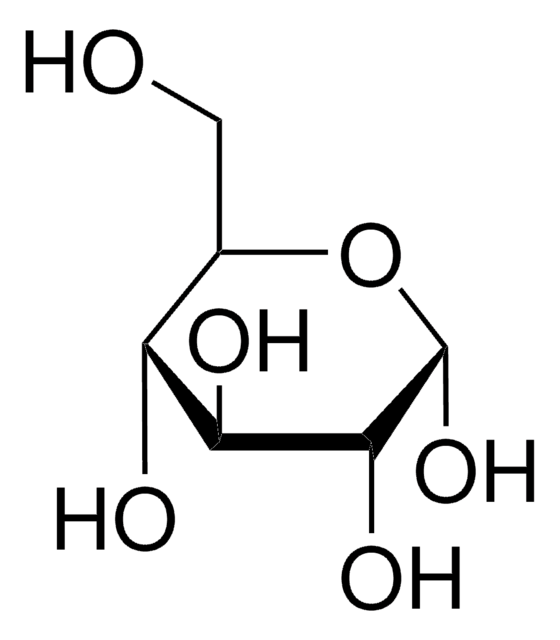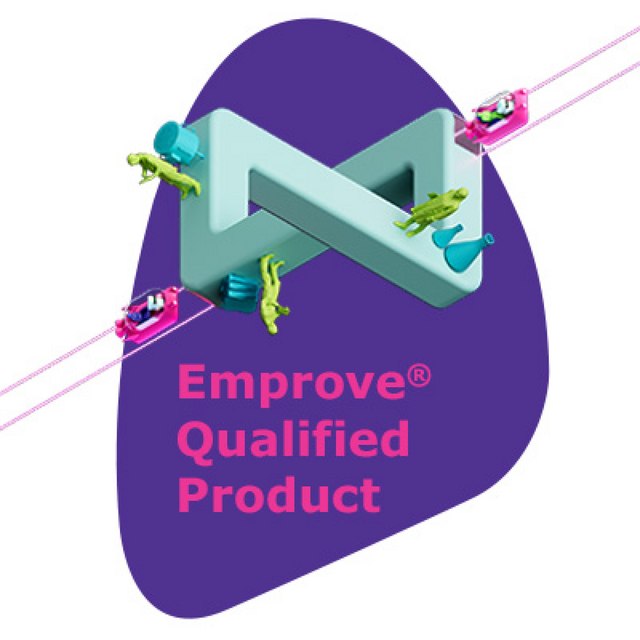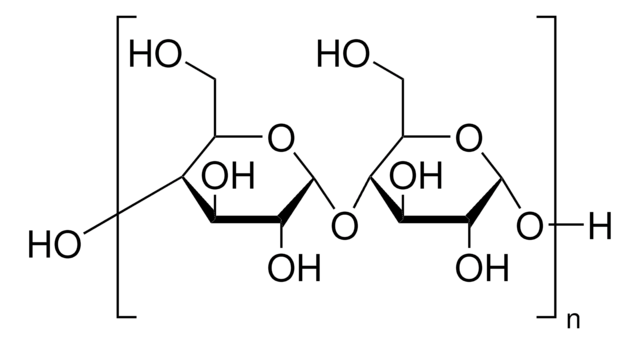1.05910
Maltose monohydrate
suitable for microbiology
Synonym(s):
Maltose monohydrate, 4-O-a-D-Glucopyranosyl-D-glucose
About This Item
Recommended Products
pH
4.5-6.0 (20 °C, 50 g/L in H2O)
Quality Level
mp
125 °C (anhydrous)
solubility
470.2 g/L
bulk density
320 kg/m3
application(s)
microbiology
storage temp.
15-25°C
SMILES string
O1[C@@H]([C@@H]([C@H]([C@@H]([C@H]1CO)O)O)O)O[C@@H]([C@H](O)[C@@H](O)C=O)[C@H](O)CO.O
InChI
1S/C12H22O11.H2O/c13-1-4(16)7(18)11(5(17)2-14)23-12-10(21)9(20)8(19)6(3-15)22-12;/h1,4-12,14-21H,2-3H2;1H2/t4-,5+,6+,7+,8+,9-,10+,11+,12+;/m0./s1
InChI key
HBDJFVFTHLOSDW-DNDLZOGFSA-N
General description
Application
Analysis Note
Spec. rotation [α²0/D (10 %; water; calc. on anhydrous substance): +135.0 - +139.0 °
Heavy metals (as Pb): ≤ 0.001 %
Water: 4.0 - 7.0 %
Suitability for microbiology: conforms
Storage Class Code
13 - Non Combustible Solids
WGK
WGK 1
Certificates of Analysis (COA)
Search for Certificates of Analysis (COA) by entering the products Lot/Batch Number. Lot and Batch Numbers can be found on a product’s label following the words ‘Lot’ or ‘Batch’.
Already Own This Product?
Find documentation for the products that you have recently purchased in the Document Library.
Our team of scientists has experience in all areas of research including Life Science, Material Science, Chemical Synthesis, Chromatography, Analytical and many others.
Contact Technical Service



